With a there's more where that came from attitude, I have decided to introduce my other coins and bills I've got floating around from various places around the world, and through the ages. And there are quite a few indeed! Many years ago I would put them away, disregarding their worn-out raggedness, and forget about them. I didn't care about their value as collectibles, it was more just a curiosity for me. Although, in certain cases, like these pretty Czechoslovakian Koruna banknotes, I used them for decorating my walls.
From the Final Years of the Country
These three bills remained with me from a visit to Prague sometime in the early 1990's. They were relatively new, having been issued between 1986 and 1989. Around that time Czechoslovakia was going through some major changes: After the fall of the Iron Curtain, known locally as the Velvet Revolution, the republic changed its name from socialist to federal. However, that new entity didn't last very long, as the entire country dissolved into the separate Czech and Slovak republics soon after, discontinuing its former common currency. In my opinion a pity, at least for the money, as this entire series of banknotes was remarkably pleasing to the eye. This was apparently clear to the good folks from the Czechoslovak central bank too, since the designer of these bills, Albín Brunovský is explicitly mentioned on each one of them.
Colorful Obverse, Picturesque Reverse
Starting out with the 10 Kčs note, we are treated for an explosion of blues and greens in the dominating white-brown theme. Unlike with most currencies, where each denomination has mainly one color, or the USD, where all banknotes have the same color, these koruna bills seem to want to incorporate as many colors as possible! And this is just the beginning, with the face of the poet Pavol Országh Hviezdoslav on the front.
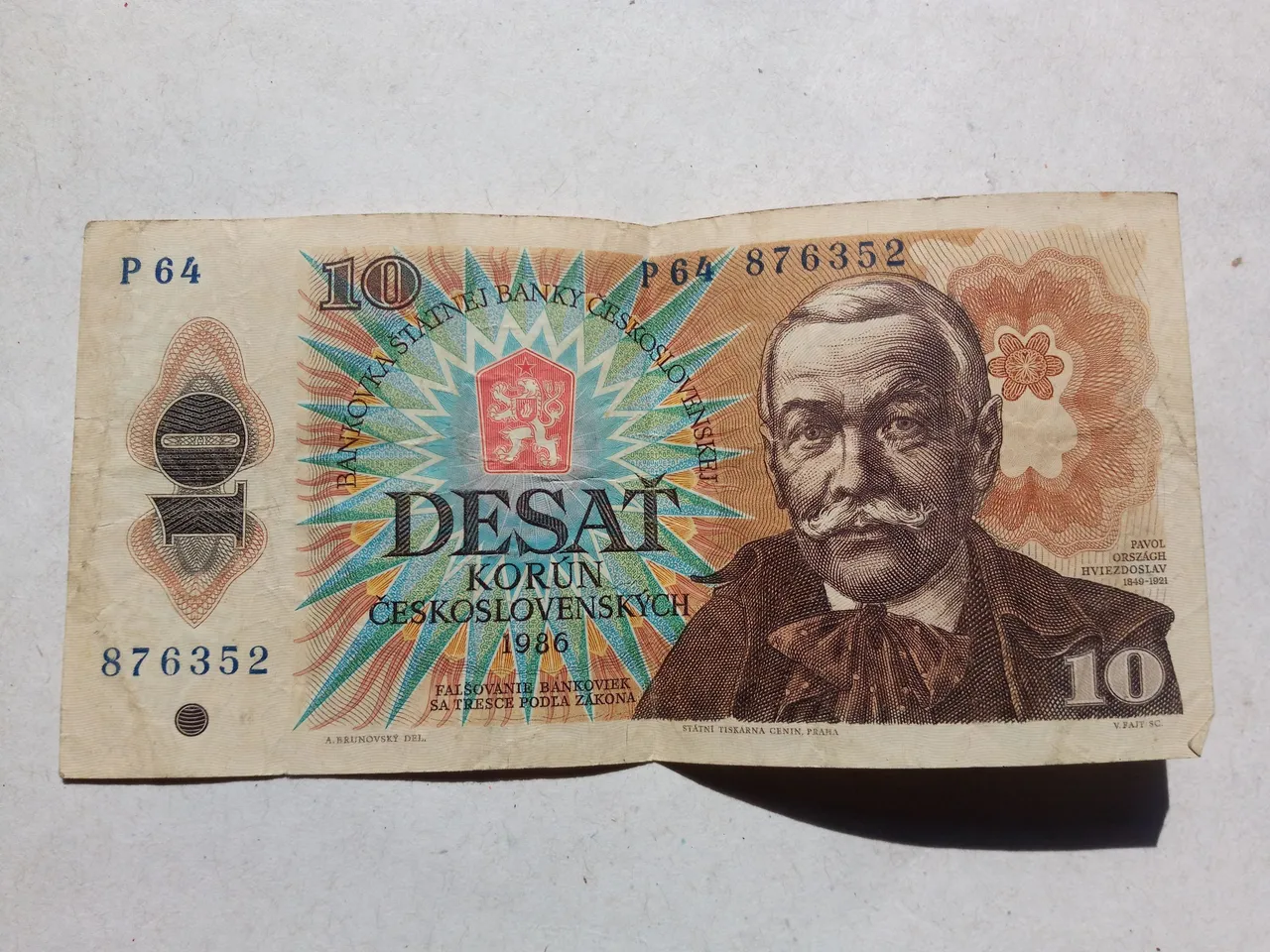
The reverse side of the same banknote features a lovely landscape from Orava / Árva County, a mountainous region in present day Slovakia, which is also where Országh-Hviezdoslav from the obverse side was from. I just love looking at the elaborate image on this small bill (133 × 67 mm). There's so much going on, from the sunburst, to the forested hillside, to the presumably endemic bird species, and the wild strawberries on the right margin.
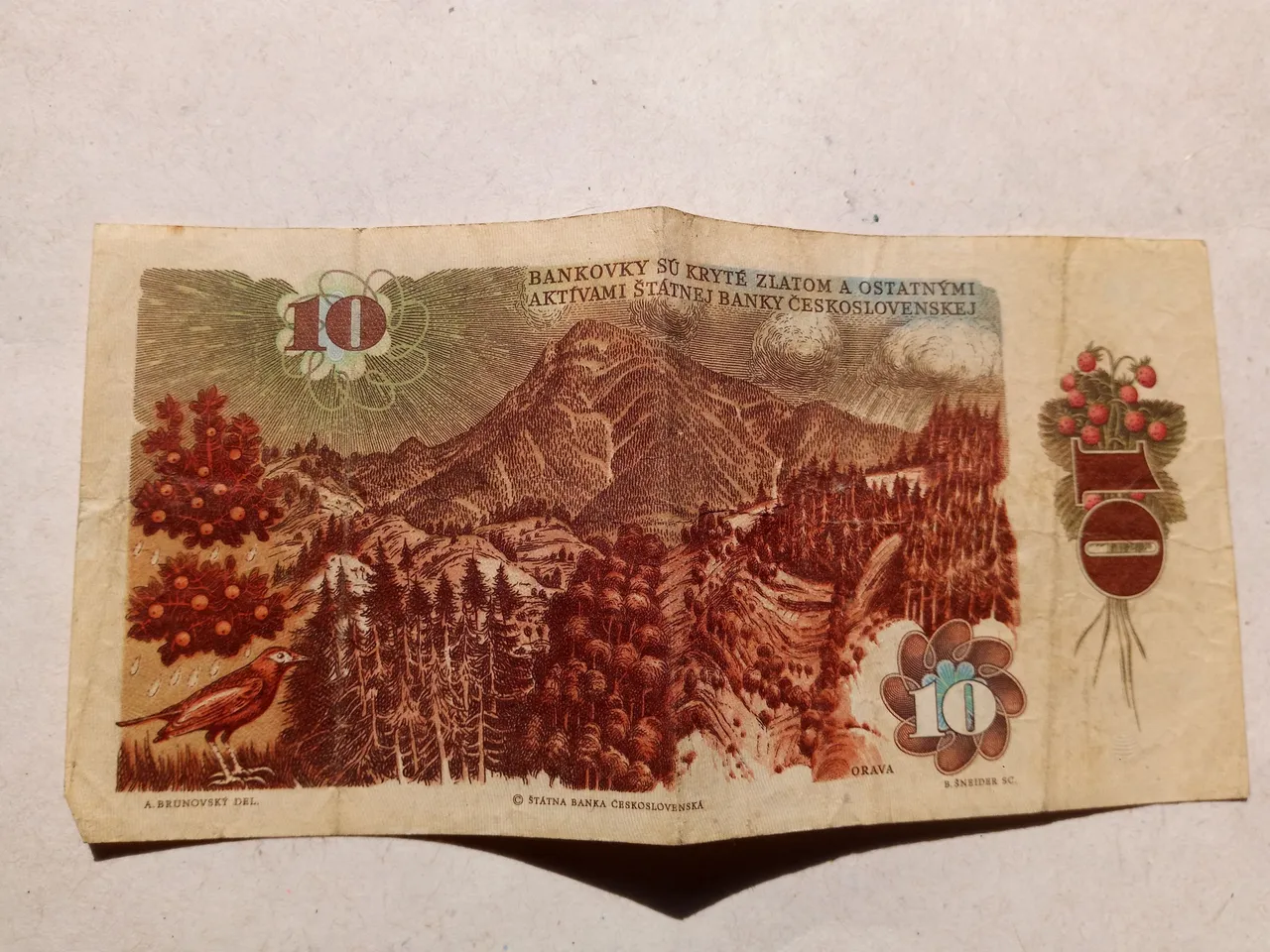
A Poster on My Wall
Continuing with the 20 Kčs bill, the colors and the designs get even better! Granted, this particular banknote shows a good amount of wear (and a bit of tear). It may have been crumpled up in pockets, so the colors have lost some of their brightness. Still, the design is breathtaking, with a flourishing tree, a starry firmament, and a heavy looking book in what could be the sun disk. The featured personage is 17th century philosopher Jan Amos Komenský, considered the father of modern education.
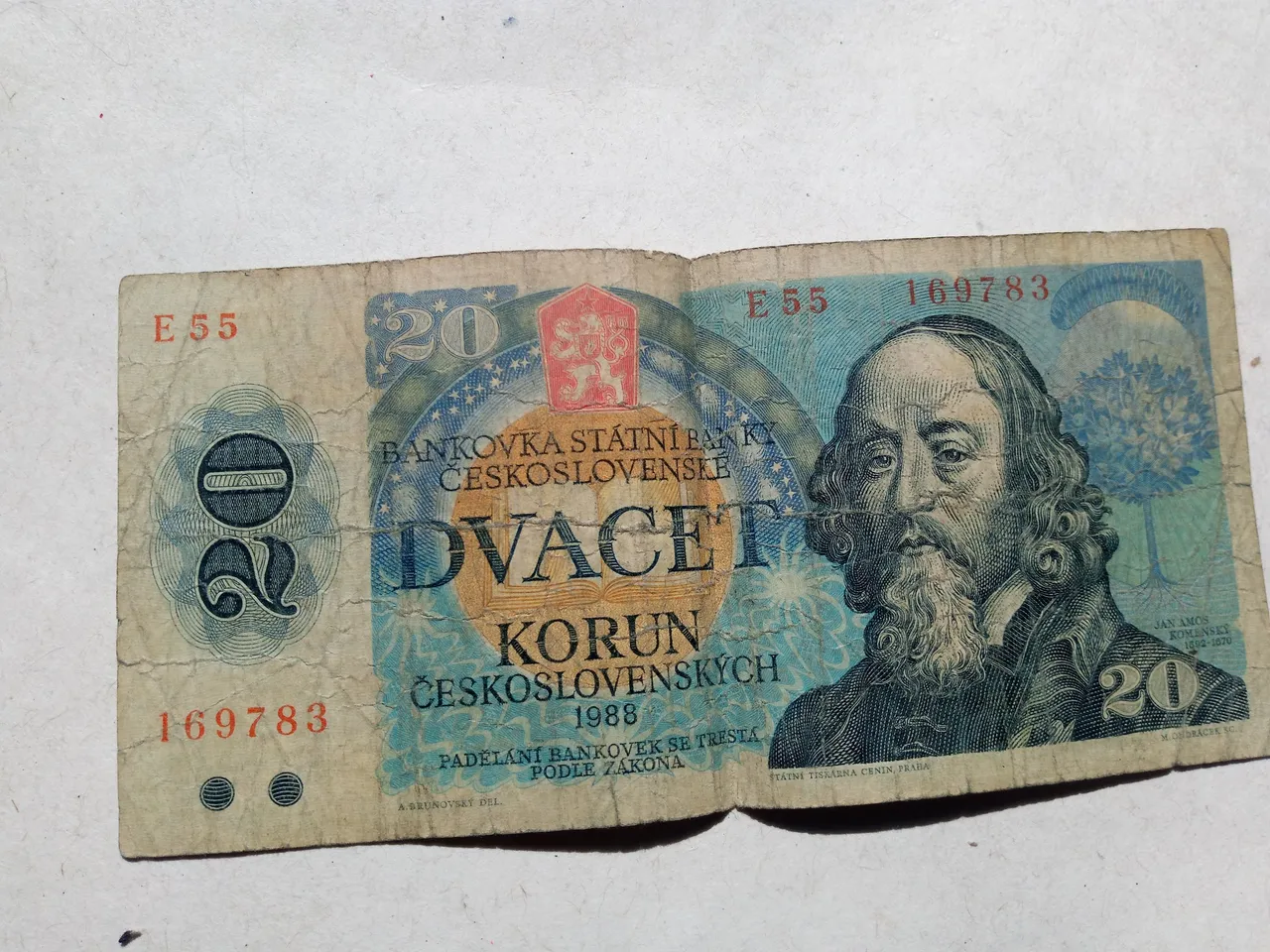
Taking the theme of education to a higher level, the obverse of this bill looks so nice that I also tried to elevate it to something more: I took it to a copy shop, and had them print it out in a DIN A0 size (841 × 1189 mm), which ended up on the wall of our study. Quite appropriately, all the images on it have to do with feeding the mind: the tree of knowledge with its colorful fruits, growing out of a thick book, the ancient texts all around, probably from the Bohemia-Moravia region, the armillary sphere for the tracking of celestial bodies, and even the young couple in their mid-20th century garb, reading a big book together. Though the bill is mainly blue, the reds, yellows, oranges, and greens give it an incredibly pleasant appearance. I don't have the poster any more, but I can say it looked great in the study.
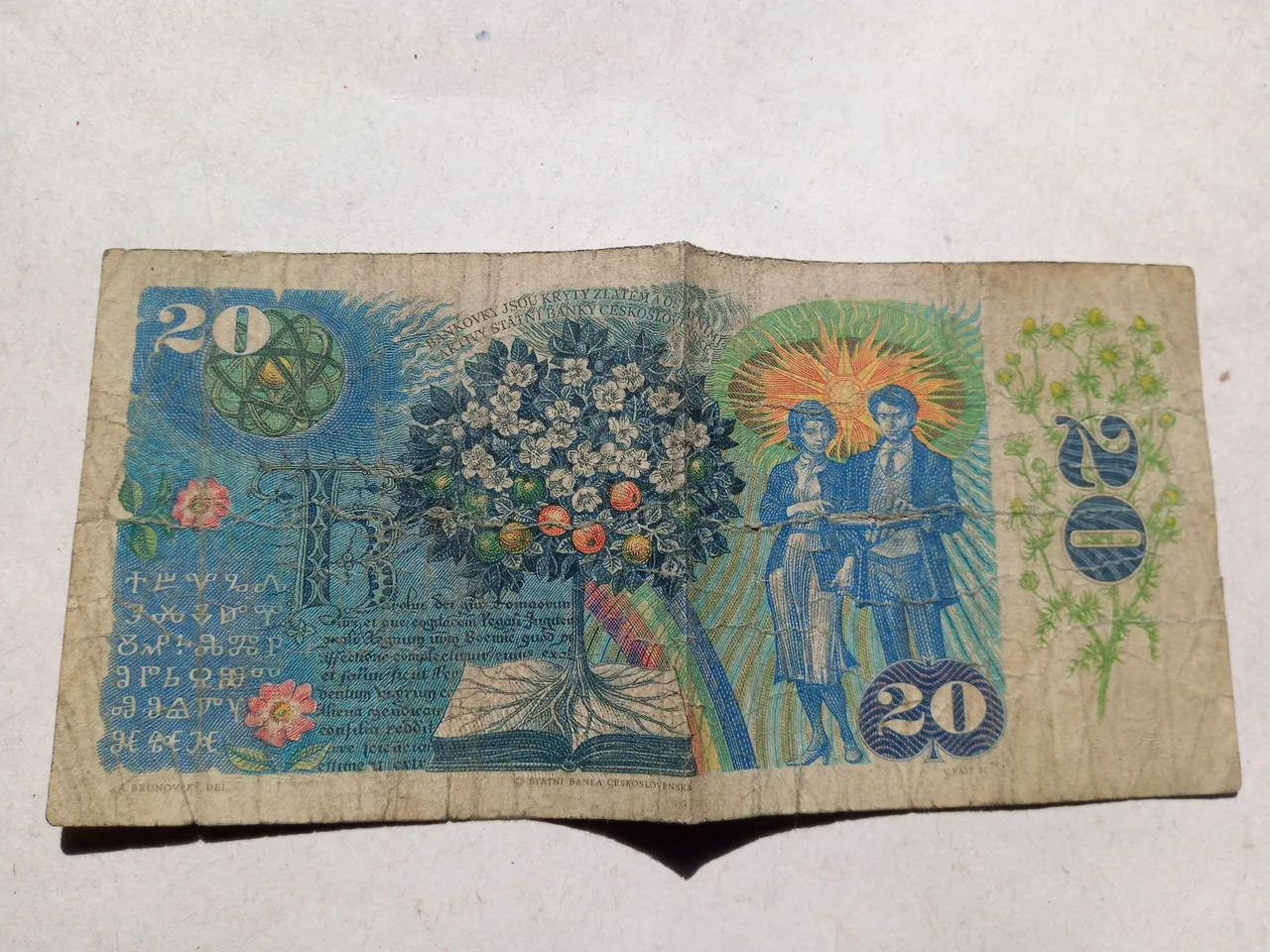
An Inspiring Beard and A Detailed Cityscape
Finally, the 50 Kčs banknote takes on a red colored theme, which however is extended by plenty of other colors, particularly on the back. The front of the bill shows Ľudovít Velislav Štúr, an important Slovak political writer and revolutionary from the 19th century. Without diving too deep into the life of this proponent of the Slovak language and national identity, I would like to mention his impressive beard - if that's what's fluffing out from under his collar. Okay, okay, maybe that IS his collar. Still, while that's the part of facial hair even bearded guys like to shave off, looking at this note makes me want to cultivate the hair growing on my neck...
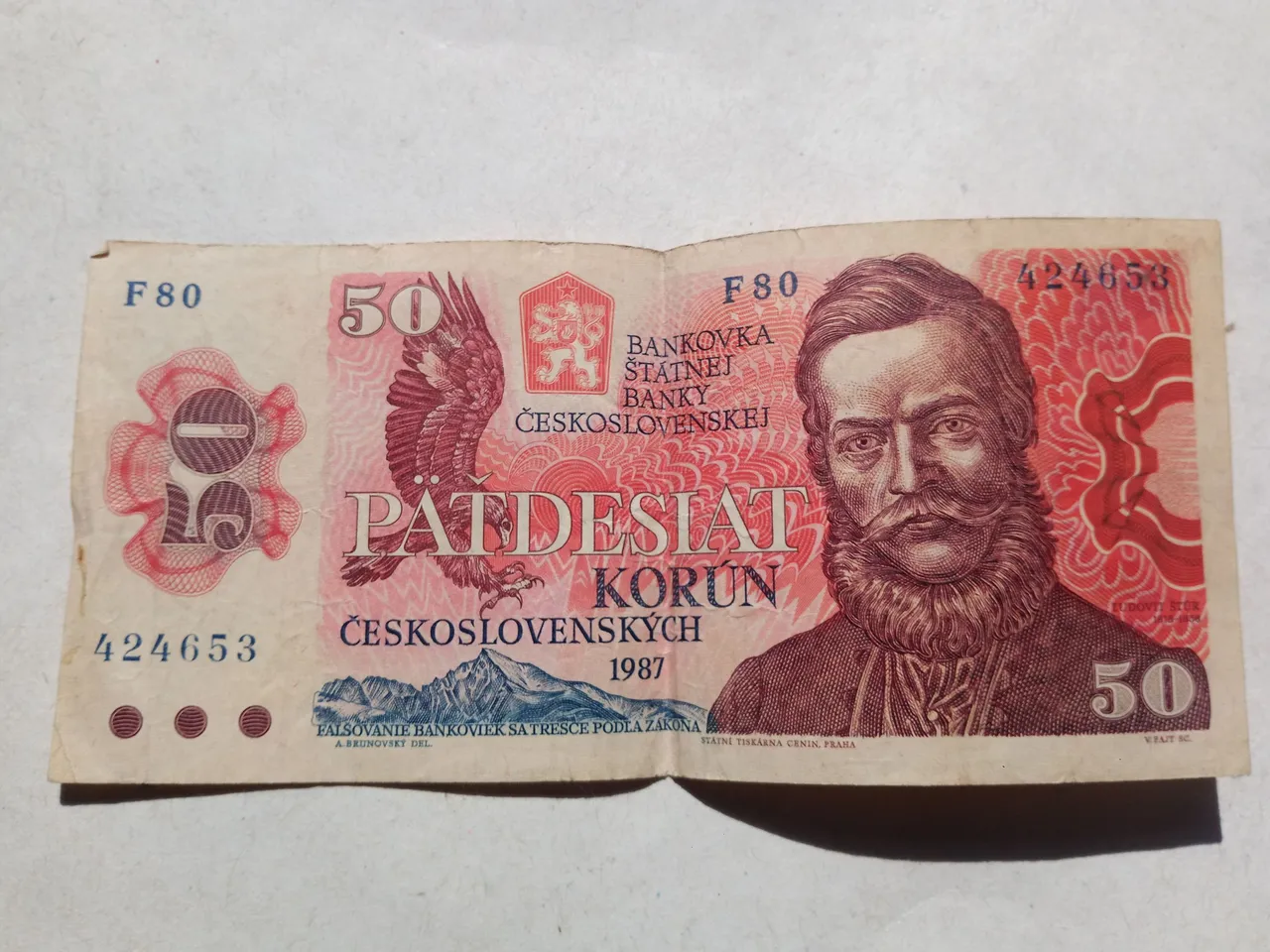
The reverse side of this banknote is also impressive, with its detailed view of Bratislava, including its famous castle and churches. Unashamed of their place in modern history, this bill also includes the more recently built concrete blocks, and its ugly multi-lane highway diamond, connecting the road on the bank of the Danube with the bridge crossing it. Though this image in by far not as interesting as the other two reverse sides, what I like here are the green colored river, and the uneven blue rings in the top left corner, possibly symbolizing the sun. Even though I couldn't see myself making a poster out of this, it's still better looking than many banknotes from other countries.
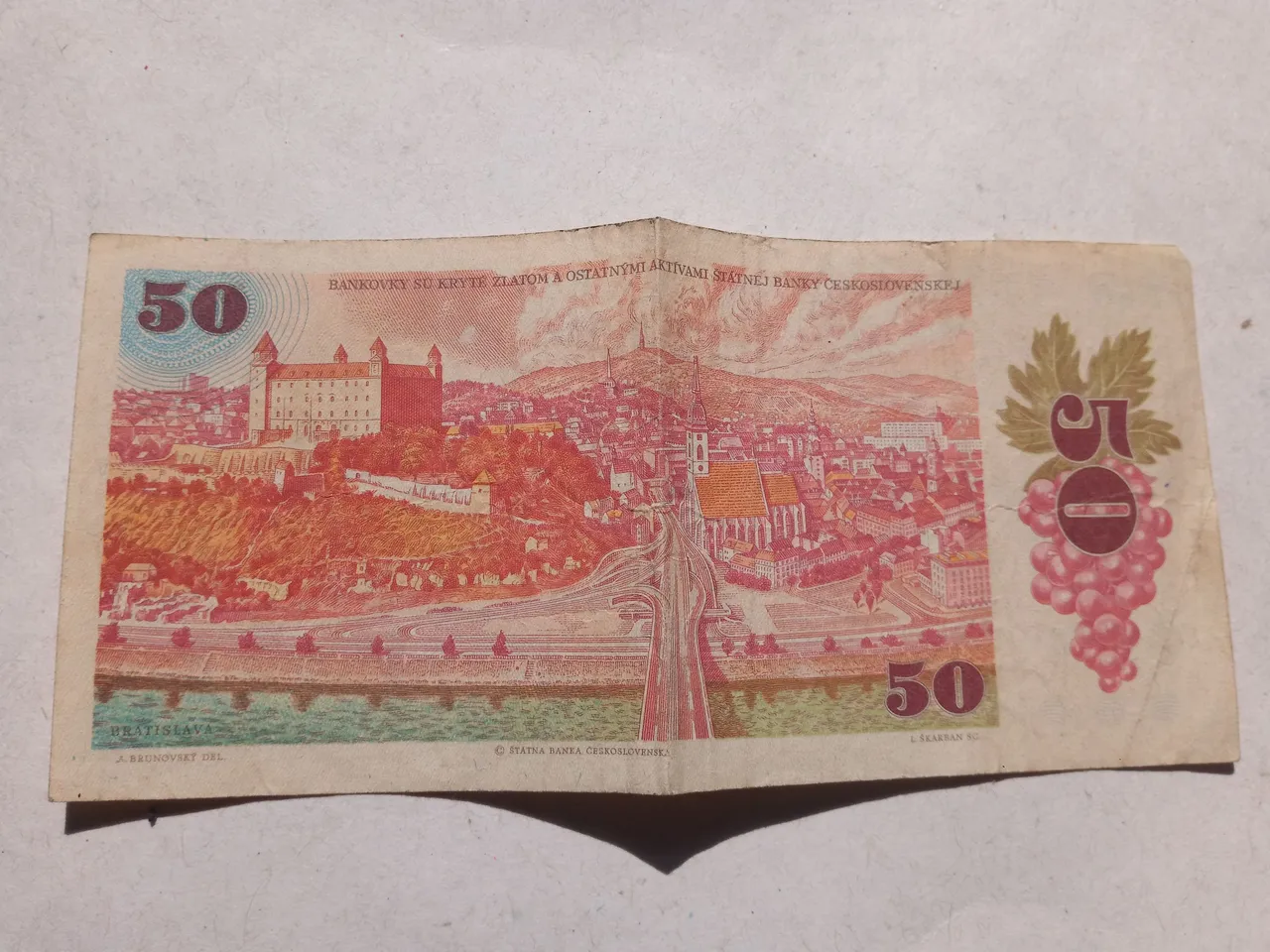
Visit the Previous Post in my Funny Money Series:
Mexico - Looking at Some Old Coins
Yugoslavia - Lots of Zeros Before the War
